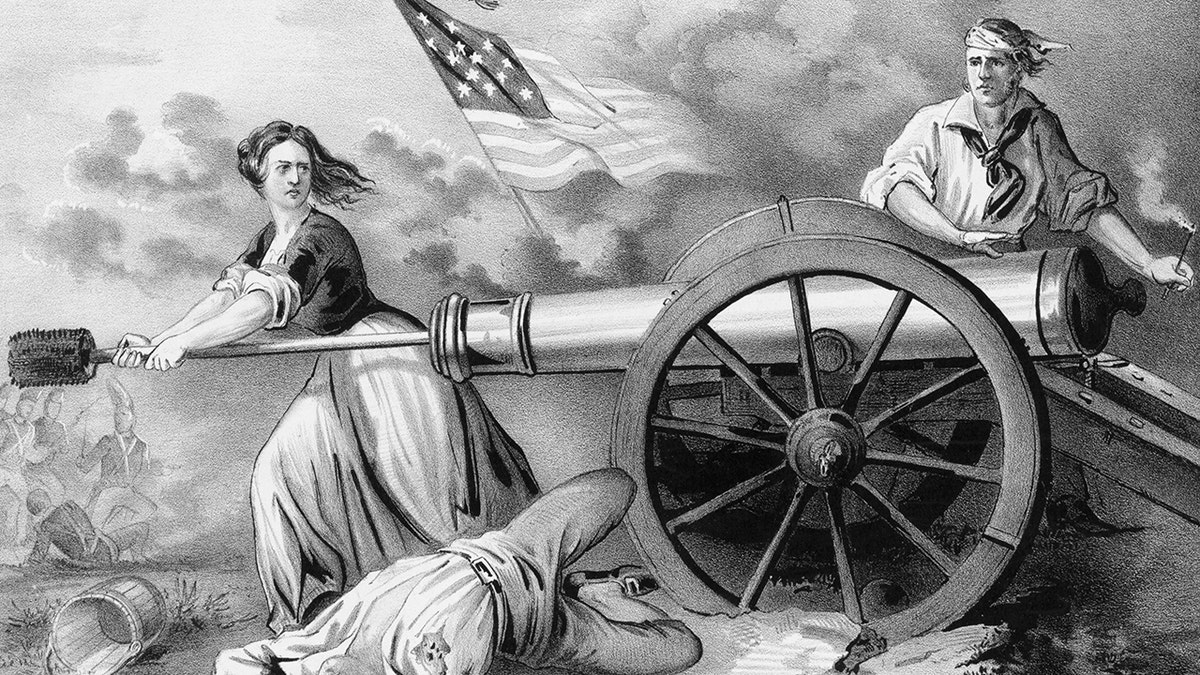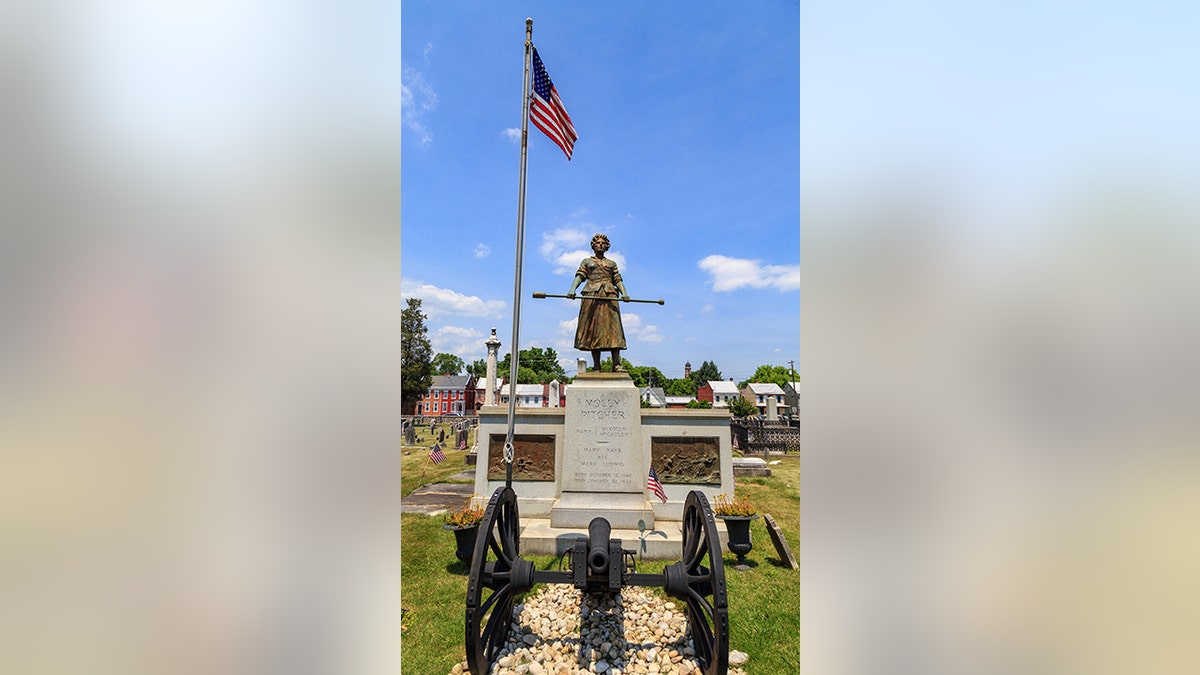Fox News Flash top headlines for June 26
Fox News Flash top headlines are here. Check out what's clicking on Foxnews.com.
On this day in history, June 28, 1778, Mary Ludwig Hays, wife of artilleryman William Hays, offered water to her husband’s battery at the Battle of Monmouth during the American Revolution, according to legend — and subsequently ascended to fame as "Molly Pitcher."
Mary Ludwig was born on Oct. 13, 1754. Historians disagree over where she was born, but she was either born in Philadelphia, Pennsylvania, or in the state of New Jersey, according to The National Women's History Museum website.
She married William Hays, a barber, in her early 20s. William Hays enlisted in the 4th Pennsylvania Artillery and served in the Continental Army when the American Revolutionary War began.
ON THIS DAY IN HISTORY, JUNE 27, 1985, ICONIC ROUTE 66 REACHES ‘THE END OF THE ROAD’
Commonly, soldiers’ wives followed their husbands when they enlisted in the army — and Mary Hays opted to join her husband at the Continental Army camp, where she often washed clothes and cared for the sick, according to the museum.
It was during the Battle of Monmouth on June 28, 1778, that Hays allegedly secured her legacy as an American patriot and hero.

Sketch of Molly Pitcher firing cannon at the Battle of Monmouth during the American Revolutionary War. (Alamy)
"Hays went back and forth into the battle to bring water to thirsty soldiers from a nearby spring," said the museum’s website.
"She stayed on the battlefield bringing water and caring for wounded soldiers until her own husband got hurt," it added, pulling from reports from that time.
ON THIS DAY IN HISTORY, JUNE 19, 1865, THE END OF SLAVERY IS PROCLAIMED IN TEXAS
Mary Hays "endeared herself to the troops because of her unusual courage and hard work under fire the Battle of Monmouth," noted the National Archives website.
As a tribute to her service, a Molly Pitcher U.S. postage stamp was issued on Oct. 20, 1928.
Additionally, the legend goes that when William Hays collapsed or was wounded, Mrs. Hays took her husband’s place in the gun crew for the rest of the battle, notes Brittanica.com.
Gen. George Washington, present at the conflict, is said to have promoted her to sergeant the day after the battle, according to The American Legion's website.

Molly Pitcher, or Mary Ludwig Hays, is said to have fought in the Battle of Monmouth. (Alamy)
At the close of the war, William and Mary Hays returned to Pennsylvania.
They settled in the town of Carlisle, where she worked as a domestic worker as well as a "charwoman" in the State House, according to Historic Valley Forge’s website.
Her husband died in 1786 — and in 1793, Hays married John McCauley, who had also served in the war.
Hays eventually was awarded a pension in 1822 by the Pennsylvania State Legislature, noted Historic Valley Forge’s website.
Mary Hays died on Jan. 22, 1832.

The grave of Mary Ludwig Hays — better known as Molly Pitcher — is located in the Old Graveyard Cemetery in Carlisle, Pennsylvania. (Alamy)
A statue bearing Hays’ likeness is a prominent part of the Old Graveyard in Carlisle, Pennsylvania, where she is buried.
For more Lifestyle articles, visit www.foxnews.com/lifestyle
It wasn't until the anniversary of the war in 1876 that a marker noting her exemplary service was placed on her grave, according to the Forge’s site.
CLICK HERE TO SIGN UP FOR OUR LIFESTYLE NEWSLETTER
As a tribute to her service, a Molly Pitcher U.S. postage stamp was issued on Oct. 20, 1928, according to the Smithsonian Institution.
CLICK HERE TO GET THE FOX NEWS APP
"Although the story is questioned by some, the tale of Molly Pitcher continues to live on as a tribute to the many Revolutionary women who helped form the new nation," the Smithsonian noted.





















